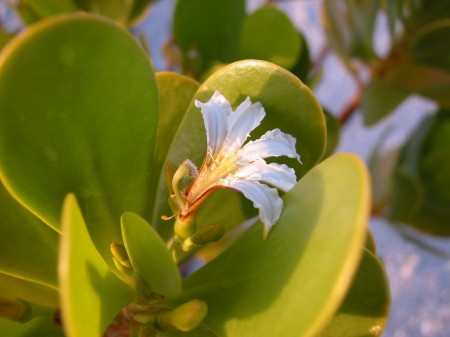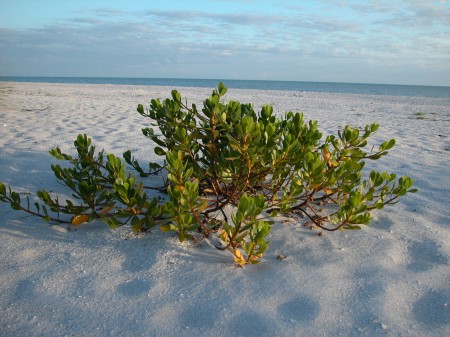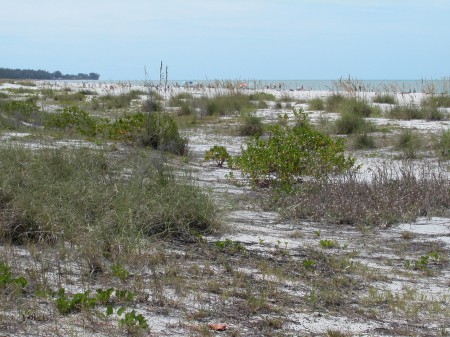To most people, beach plants are just an obstacle to walk around on the way to the water. But they do serve a purpose. Many purposes, in fact.
Beach plants are specially adapted to live in the hot, dry, salty environment of the upper beach and dune. But development of Florida’s has decimated beach plant communities to the point where some of the plants are listed as threatened species, like the Inkberry.
Scaevola plumieri, also known as Inkberry, Half-flower, and Gullfeed, is an evergreen plant that grows on the coasts of central and south Florida as well as on Texas, Louisiana and Caribbean island beaches. Most beach plants have small, narrow leaves, but the Inkberry stands out with its somewhat larger leaves. It is a low, sprawling plant that only grows a few feet high. It’s easily overlooked as it does not have large beautiful flowers like the hibiscus, the beach morning glory or railroad vine.

The odd shaped flower of the Inkberry is white, and looks like just half a flower, a trait responsible for one of its common names: "half-flower."
The Inkberry’s small white flowers are structured such that when a pollinating insect visits to enjoy the nectar, a specially shaped “brush” rubs against the insects back and loads it with pollen, which the insect carries to the next flower. Clever, no? You can actually see that special structure in the flower above (click the photo to enlarge).
The small dark purple fruits of the inkberry are responsible for the plant’s common name. The berries are NOT edible and can be poisonous if enough are eaten, according to the literature.
You can read more details about the inkberry (link opens pdf file) along with an invasive plant known as beach naupaka (Scaevola taccada). The beach naupaka is often incorrectly identified as inkberry.





